 Midget Submarines (1955) (1952-1970)
Midget Submarines (1955) (1952-1970)Cold War US Subs
GUPPY | Barracuda class | Tang class | USS Darter | T1 class | X1 class | USS Albacore | Barbel classUSS Nautilus | USS Seawolf | Migraine class | Sailfish class | Triton class | Skate class | USS Tullibee | Skipjack class | Permit class | Sturgeon class | Los Angeles class | Seawolf class | Virginia class
Fleet Snorkel SSGs | Grayback class | USS Halibut | Georges Washington class | Ethan Allen class | Lafayette class | James Madison class | Benjamin Franklin class | Ohio class | Colombia class
The USN followed British midget subs progresses in 1950, and tested that year the XE-7 on loan, which led to the SBC 65 programme. X-1 was the result. This United States Navy Midget Submarine was laid down on 8 June 1954 at Deer Park in Long Island (New York) by the Engine Division of Fairchild Engine and Airplane Corporation, launched on 7 September 1955 at Oyster Bay in Long Island, completed by Jakobson Shipyard, delivered on 6 October to the Navy at New London in Connecticut. She started operation by 7 October 1955 under command of Lieutenant Kevin Hanlon, but was never commissioned. Unarmed and without sonar, she acted as intended as target sub, tested notably an Hydrogen peroxide/diesel engine was modified in 1960 and was used for numerous tests until 1973, being retired from service and ended outdoor as a museum ship at the Submarine Force Library and Museum where she can be seen today. #ussx1 #usnavy #midgetsubmarine #coldwar
Development of Project SBC 65
The USN was never really interested into midget submarines, due to absence of geographical impetus for small boats tailored for confined waters such as the European Baltic and Mediterranean (nor the need to sneak in Canadian Ports from the great lakes!). Only fleet submarines had a real value for the wide expanses of the Pacific and Atlantic. Still, British experiments since WW2 were followed with interests, and the marriage of such midget submarine and its new nuclear deterrence brought something completely new to the table: The possibility to drop a nuclear bomb in the entrance of a strategic port in that case either Murmansk or Archangel. It was indeed believed the Soviets would do exactly the same, and try to bring these inexpensive models right in the most impotant ports of both Britain, NATO at large and the US east coast.
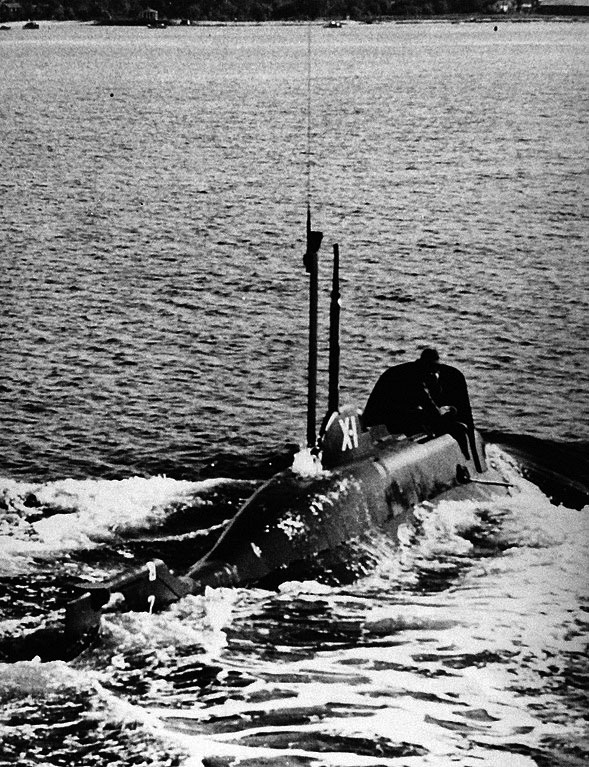
The impetus for such program in fact dated back many years prior, with paperclip plans and reports on German, Italian and Japan midget subs and human torpedoes, trying to assess their effectiveness, not necessarily for the USN itself, but as a possible adversary, USSR being the most probable by far. The greater concern was indeed that these were inexpensive and that all belligerents had plans with these, the Japanese for example tried to blew up Gatun lake doors in the Panama canal with Kaitens and sneak into Pearl Harbor, not for attacking but rather to provide reconnaissance. So in 1945-47 a great deal of seized axis midgets were studied, German Biber and Seehund midgets, Italian Maiale human torpedoes as well as cordial invitations to see the British midget submarines being tested. In 1950 the U.S. Navy had a good idea of how to create its own midget submarine if the need arose.
In addition, the U.S. Navy briefly loaned the British XE-7 in 1950 for testing purposes.
They also kept track of the latest evolution of the concept in Britain, the Stickleback class. In 1958 indeed HMS Prat (X53, launched 30 December 1954) was loaned to the US Navy in replacement for the XE-7. This was a British midget submarine designed to drop a nuclear bomb into the entrance of Soviet ports. The latter prospect was really instrumental, as it was a legitimate fear shared by both countries. To test the ability to defeat such potential midgets, at least one had to be built. This was the birth of Project SBC 65.
XE-7 was briefly participating in harbor defense drills, penetrating US defenses along the East Coast and used also for training the UDTs (Underwater Demolition Teams) testing its “wet and dry” chamber and pioneering divers spec ops. XE-7 all along retained its Royal Navy crew and the Navy considered a more permanent loan of XE-9. However another faction poreferred to built a more tailored boat, an X-Craft based on a US design. The Program initially called for several of these, but it wa slater scaled back to just a single craft, smaller than the original specifications in 1953 were plans were completed by Fairchild Aircraft.
Design of X1
Hull and general design
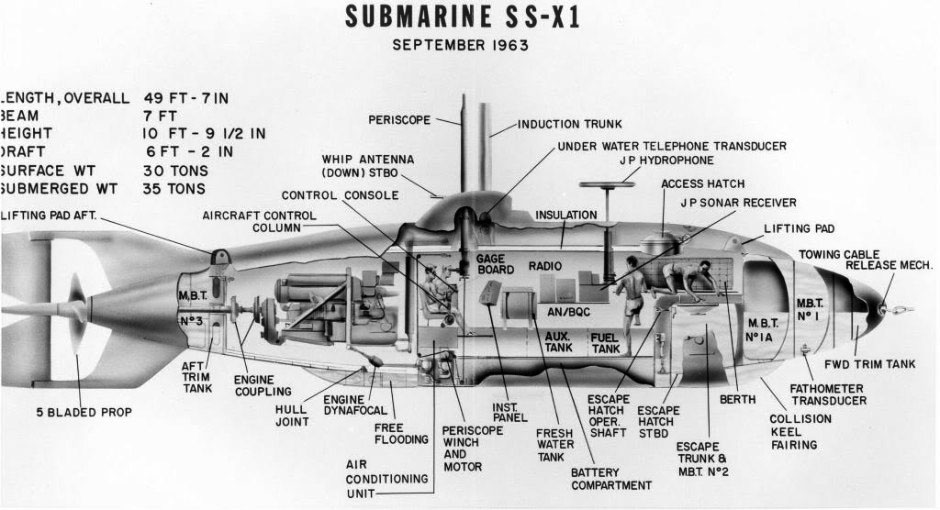
X1 was indeed quite small, and using an aircraft manufacturer made some sense due to the scale of it, instead a trusted usual provider such as Electric Boats in Groton. The welding techniques required to make the unitary pressure hull were however subcontracted to a shipyard, Jakobson. The latter was in operation from 1926 to 1938 at Brooklyn before movng on to Oyster Bay, and in activity until 1984 it manufactured tugs, ferries, minesweepers, yachts, and fireboats. X1 was its one and only submarine ever.
X1 was fairly small, even to British standards, at 36.3 long tons (37 t) submerged and 31.5 long tons (32 t) surfaced, it measured 49 ft 6 in (15.09 m) overall, for 7 ft (2.1 m) in beam with the ballast blisters, and a draft of 6 ft 2 in (1.88 m). It was shaped like a rotund torpedo with the same aft cross type tail planes and rudders, no conning tower to speak of, but a small structure amidship housing utility masts and persiscopes, antenna, and an access hatch forward, protected by a shield against seawater, later removed.
X1 was moidified many times during her career, not only for her powerplant, but also to test specific equipments and this also showed in her appearance. This HI Sutton profile for example shows her later in her career, prior to the end of her service. It showed her keel, bulgy structure over the hull, large tail comparatively to her small 7-bladed propeller for agility underwater, and the access doors for her divers in the pressure chamber forward.
Needless to say she had no armament (not even attachment points for a military payload) nor a sonar. She had a listening device, though.
Powerplant
This was probably the most interesting part of the design. The USN Navy had been following progresses of the Royal Navy after their study of Professor Walter concept in Germany in WW2 and experimental closed loop system alternative to conventional diesel-electric systems as nuclear propulsion for submarine, in its infancy, was seen by many impractical or irrealistic. The two Explorer class boats were such experiments, testing a Hydrogen peroxide engine, but the expêriment was abandoned as the mixture used was explosive and accident-prone. In the US case, it was attempted to create an Hydrogen peroxide power unit coupled with a diesel engine and battery system. This enabled the US Navy to test both this propulsion concept and the midget concept, killing two birds with a stone.
And just like the RN, saw how much this type of mixture was volatile and outright dangerous. The powerplant was tested for two years, until May 1957 generating reports on how not to use Peroxyde. She was modified thus in May to accept a standard diesel-electric drive. On 2 December 1957 she was taken in hands for another reconversion, so small she could fit into a modest aviation hangar. She was cut in two at the former assembly point to access both powerplant and internals, such as the pressure hull and was essentially rebuilt for testing purposes. This was a long process and she only was pressed in service again by December 1960 and stayed ion this configuration until retired from service in February 1973. She never was stricken nor decommissioned, and only listed in civilian auxiliaries as “SS X1”.
Various sources have contradictory reports on her crew, Conways stating 8 in normal conditions, with 4 as bare minimum for operations, and ten including probably two divers for spec-ops. In that case she had not enough berthing for everybody.
She had a snorkel, but her range was noted as 500 nautical miles estimated, with Conways giving the figures of 15 and 13 knots respectively surfaced and underwater. Her max diving depht is unknown but was probably much reduced due to her use in shallow waters. Her undebelly keel was jettisonable in emergency.

SS X1 after refit in 1962. Note the new orange livery for easy spotting.
⚙ specifications |
|
| Displacement | 36.3 long tons submerged, 31.5 long tons surfaced |
| Dimensions | 49 ft 6 in x 7 ft x 6 ft 2 in (15.09 x 2.1 x 1.88 m) |
| Propulsion | Hydrogen peroxide/diesel engine, see notes |
| Speed | 30 bhp, 15/12 kts surfaced/sub |
| Range | Over 500 nm |
| Armament | None |
| Crew | 8, 4 minimum |
Career of X1
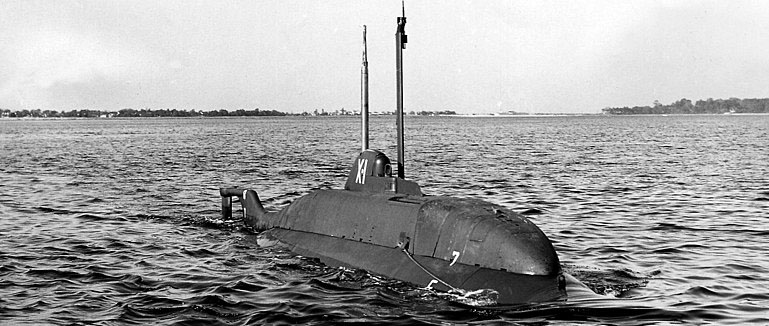
This project was inspired indirectly by the British X-Craft of the Second World War, one of which visited the USA specifically to provide design references. The original propulsion plant used hydrogen peroxide, this craft being the sole US fruit of the postwar Allied peroxide programme; (see the British Explorer class). She was built in 1954—55, but suffered an internal explosion in February 1958, which broke her into three pieces. Rebuilt at Philadelphia, she rejoined the Navy on 14 December 1960 as a special test craft at NSRDC, painted orange.
X-1 started service for rigorous and extensive tests, assisting the Navy to evaluate its capacity at defending harbors against midget submarines. She helped thus to determine both the offensive capabilities and limitations of this type, provided the Soviets would creat such vessel. It shoyld be noted that the USN was not interested to have any projection doctrine for these types not mother submarine. But its legacy led to the DSRV anyway (see later).
X-1 tested first a hydrogen peroxide/diesel engine, but the program was stopped outright after an explosion of her hydrogen peroxide supply on 20 May 1957. It was powerful enough to blow off the whole bow section but fortunately, no one was seriously injured, not on board when it happened. Still it was necessary to remove the powerplant and fit a clasic diesel-electric drive. On 2 December 1957 she was deactivated at Philadelphia for more modifications and a change in role and doctrine, once the USN had a pretty good idea on how to deal with midget submarines on its shores. X1 was indeed tested and compared to the British X53 on loan as well.
X1 was towed to Annapolis in Maryland in December 1960 to be reactivated, assigned to Submarine Squadron 6 at the Small Craft Facility, Severn River Command. She was used for experiments in the Chesapeake Bay. She multiplied tests for the Naval Research Laboratory, her scientists observed operations from a platform suspended beneath the Bay Bridge notably to test the properties and actions of sea water.
She was in service until January 1973, and the Navy signed the end of her service on 16 February 1973. On 26 April she was transferred to the Naval Ship Research and Development Center in Annapolis. On 9 July 1974 she could have been scrapped but it was decided to preserve her as an historical exhibit due to her prototype nature, important role and small size making her easy to carry on any truck trailer. She was at first displayed at Naval Station North Severn near Annapolis. In 2001, she was transferred to the Submarine Force Museum in Groton (Connecticut), now on display at gate guardian to the main exhibit building.
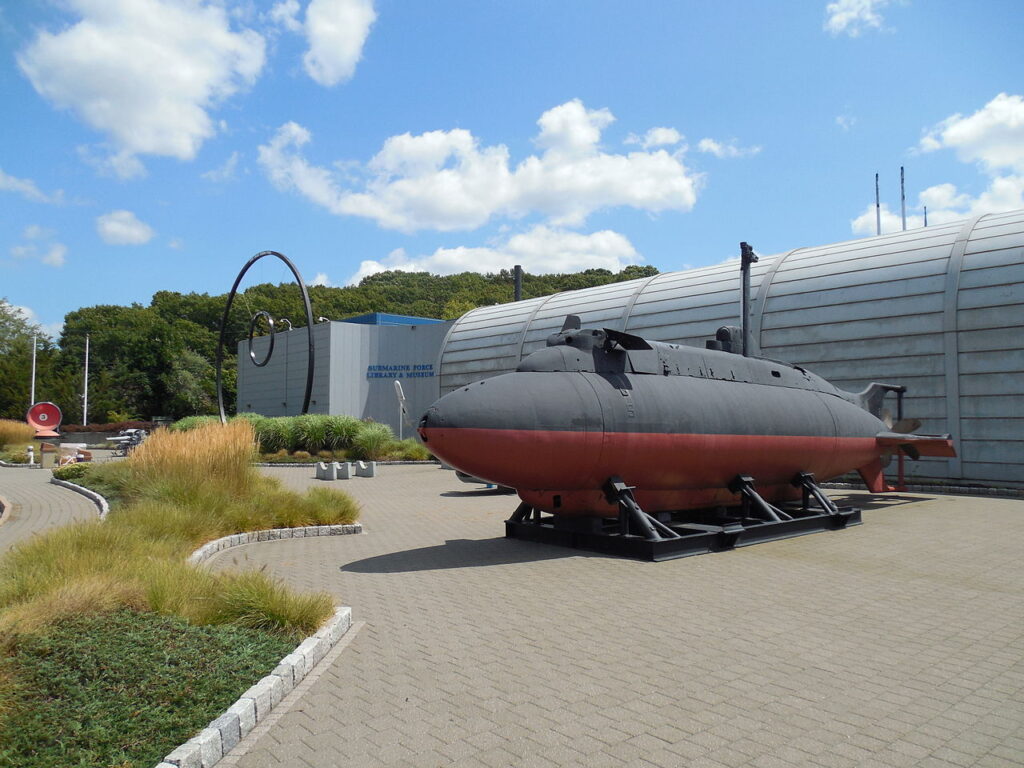
The Submarine Force Museum in Groton, CT is home to USS Nautilus, three midget submarines and a world-renowned research library.

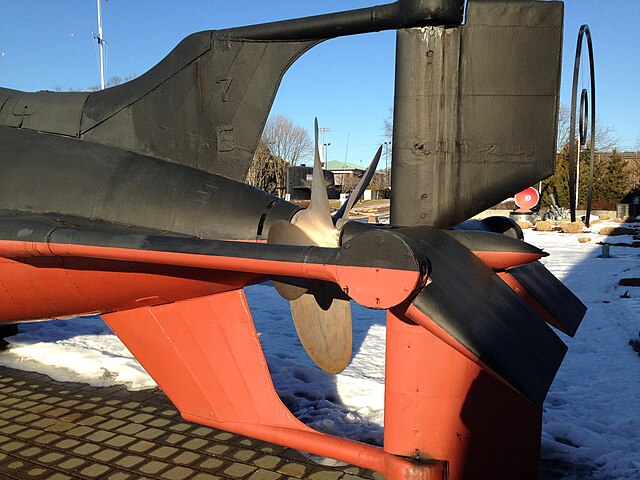
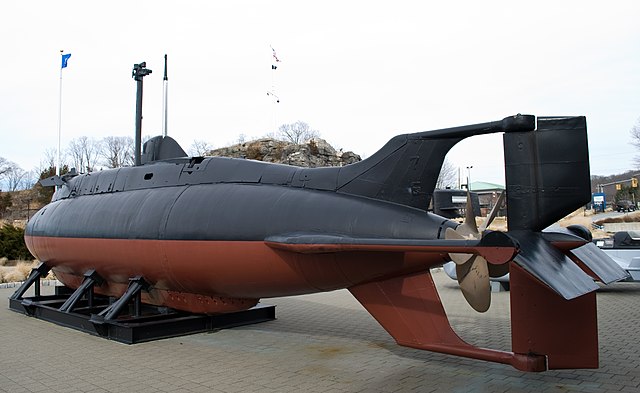
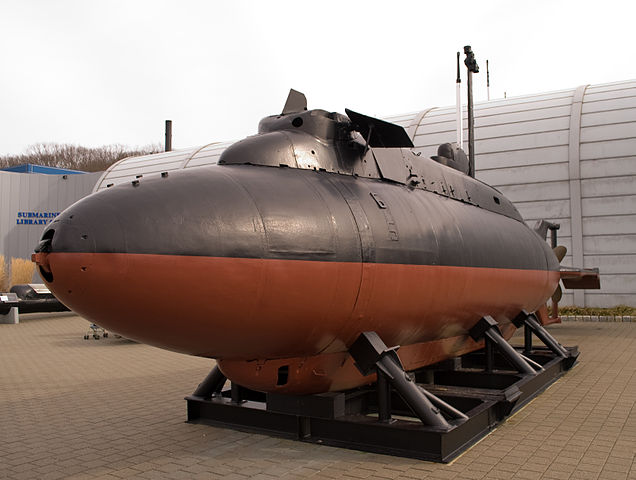
Read More/Src
Links
hisutton.com/USS_X1.html
hnsa.org/ships/x1.htm
books.google.com/ popsci
twz.com midget sub cold war
en.wikipedia.org/
commons.wikimedia.org/

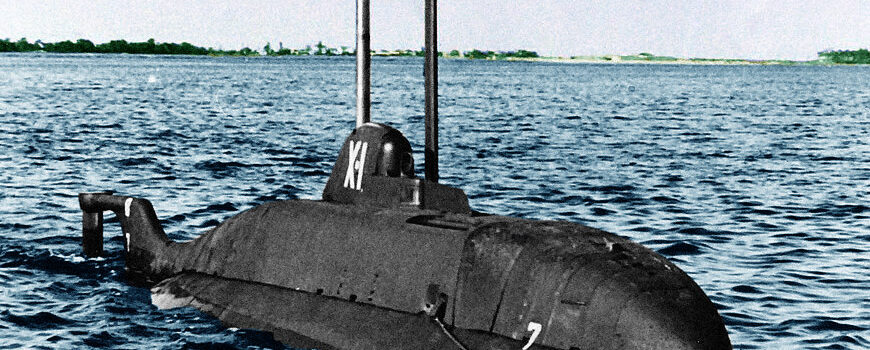
 Latest Facebook Entry -
Latest Facebook Entry -  X(Tweeter) Naval Encyclopedia's deck archive
X(Tweeter) Naval Encyclopedia's deck archive Instagram (@navalencyc)
Instagram (@navalencyc)





 French Navy
French Navy Royal Navy
Royal Navy Russian Navy
Russian Navy Armada Espanola
Armada Espanola Austrian Navy
Austrian Navy K.u.K. Kriegsmarine
K.u.K. Kriegsmarine Dansk Marine
Dansk Marine Nautiko Hellenon
Nautiko Hellenon Koninklije Marine 1870
Koninklije Marine 1870 Marinha do Brasil
Marinha do Brasil Osmanlı Donanması
Osmanlı Donanması Marina Do Peru
Marina Do Peru Marinha do Portugal
Marinha do Portugal Regia Marina 1870
Regia Marina 1870 Nihhon Kaigun 1870
Nihhon Kaigun 1870 Preußische Marine 1870
Preußische Marine 1870 Russkiy Flot 1870
Russkiy Flot 1870 Svenska marinen
Svenska marinen Søværnet
Søværnet Union Navy
Union Navy Confederate Navy
Confederate Navy Armada de Argentina
Armada de Argentina Imperial Chinese Navy
Imperial Chinese Navy Marinha do Portugal
Marinha do Portugal Mexico
Mexico Kaiserliche Marine
Kaiserliche Marine 1898 US Navy
1898 US Navy Sovietskiy Flot
Sovietskiy Flot Royal Canadian Navy
Royal Canadian Navy Royal Australian Navy
Royal Australian Navy RNZN Fleet
RNZN Fleet Chinese Navy 1937
Chinese Navy 1937 Kriegsmarine
Kriegsmarine Chilean Navy
Chilean Navy Danish Navy
Danish Navy Finnish Navy
Finnish Navy Hellenic Navy
Hellenic Navy Polish Navy
Polish Navy Romanian Navy
Romanian Navy Turkish Navy
Turkish Navy Royal Yugoslav Navy
Royal Yugoslav Navy Royal Thai Navy
Royal Thai Navy Minor Navies
Minor Navies Albania
Albania Austria
Austria Belgium
Belgium Columbia
Columbia Costa Rica
Costa Rica Cuba
Cuba Czechoslovakia
Czechoslovakia Dominican Republic
Dominican Republic Haiti
Haiti Hungary
Hungary Honduras
Honduras Estonia
Estonia Iceland
Iceland Eire
Eire Equador
Equador Iran
Iran Iraq
Iraq Latvia
Latvia Liberia
Liberia Lithuania
Lithuania Mandchukuo
Mandchukuo Morocco
Morocco Nicaragua
Nicaragua Persia
Persia San Salvador
San Salvador Sarawak
Sarawak Uruguay
Uruguay Venezuela
Venezuela Zanzibar
Zanzibar Warsaw Pact Navies
Warsaw Pact Navies Bulgaria
Bulgaria Hungary
Hungary

 Bundesmarine
Bundesmarine Dutch Navy
Dutch Navy Hellenic Navy
Hellenic Navy Marina Militare
Marina Militare Yugoslav Navy
Yugoslav Navy Chinese Navy
Chinese Navy Indian Navy
Indian Navy Indonesian Navy
Indonesian Navy JMSDF
JMSDF North Korean Navy
North Korean Navy Pakistani Navy
Pakistani Navy Philippines Navy
Philippines Navy ROKN
ROKN Rep. of Singapore Navy
Rep. of Singapore Navy Taiwanese Navy
Taiwanese Navy IDF Navy
IDF Navy Saudi Navy
Saudi Navy Royal New Zealand Navy
Royal New Zealand Navy Egyptian Navy
Egyptian Navy South African Navy
South African Navy






























 Ukrainian Navy
Ukrainian Navy dbodesign
dbodesign